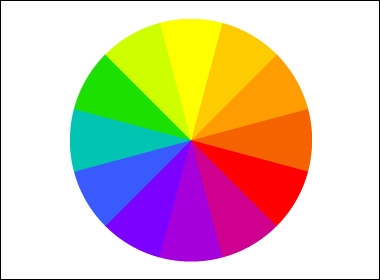Ignoring unsightly color makes it more noticeable

DEAR DESIGNER: My partner, Derek, is studying to be a chef. We are renting a space for a special event that will show off his culinary skills. In the rental room, there is a purple wall and another wall that has large windows. We want to drape the windows to make the room feel finished, but we aren’t fond of the purple wall. What color curtains should we put on the window wall to take the attention away from the purple wall? Can we go with gold and rust and pretend the purple isn’t there? Painting the wall is not an option. — David
DEAR DAVID: To give your guests the best possible experience for the evening, it’s important to select a color scheme that includes the existing purple wall. Choose a color scheme that repeats, coordinates or complements the unwanted color, and don’t look back. It may sound bizarre but it really works.
It’s common to want to ignore an unwanted color. But, unfortunately, ignoring it doesn’t make it go away and usually causes more problems than accepting it and using it in your overall plan. The unwanted color gains attention when you add an entirely different color scheme to the same space. I find it interesting that a person who is opposed to a color can sometimes mentally block it out by focusing on parts of the room they enjoy, but others still see the dysfunction. It clashes and causes a feeling of conflict.
Because you like autumn colors (gold and rust type colors) you might enjoy working with the tetradic (rectangle) color scheme in which four colors are chosen in a rectangle shape on the color wheel. This would allow you to include red, purple, gold and green.
The easiest way to gracefully introduce such opposite colors into one room is to add a large picture that contains all of the colors and then to drape your window wall with a fabric that has at least three of the colors. An elegant way to drape your window while including all the colors in this color scheme is to use sheer panels, alternating each color, repeating the sequence at least once. Sheers will introduce the various colors gently into the color palate, lessening the intensity of contrast. As an added bonus to using this color scheme, red is said to go well at culinary events, making your guests salivate long before the meal is served.
An analogous color scheme uses colors that are next to each other on the color wheel. If your event is formal and quiet, choose this color scheme. The colors next to purple on the color wheel are magenta and violet. These types of color schemes are harmonious and pleasing. Choose three colors.
Depending on the size of your purple wall, it may need to serve as the dominate color (if large), making violet and magenta supporting colors. Because magenta can be intense, use that color for small accents. For the window wall, keep it simple and elegant by using violet draperies made of sheer fabric.
A complementary color scheme uses colors that are opposite each other on the color wheel. The color opposite of purple is yellow. This color scheme works best if you use the intense version of the colors, but they must be managed carefully. They can look cartoony if not carefully placed. This color scheme will work well if your event is in the daytime and is less formal. If you use this color scheme, you will do well to marry the colors by draping the windows with a fabric that contains all the colors.
Whatever color palate you choose, use the same tone in all of your color choices. If the existing purple wall is a muted or dusty color, select muted or dusty colors in your overall color scheme. If it is vibrant, select colors that have more intensity. Consistency in tone will help the room to feel connected and well-planned.
And finally, even though you are not personally fond of the purple wall, there are others who will be. Take comfort in knowing that when your colors are coordinated properly, the room will feel wonderful to all who enter. By coordinating the décor of a room, you will be sure to serve up a memorable event.
Cindy Payne is a certified interior designer with more than 25 years of experience, a member of the American Society of Interior Designers, as well as a licensed contractor. Email questions to her at deardesigner@
projectdesigninteriors.com or send them to her at Project Design Interiors, 2620 S. Maryland Parkway, Suite 189, Las Vegas, NV 89109. She can be reached online at www.projectdesigninteriors.com.












